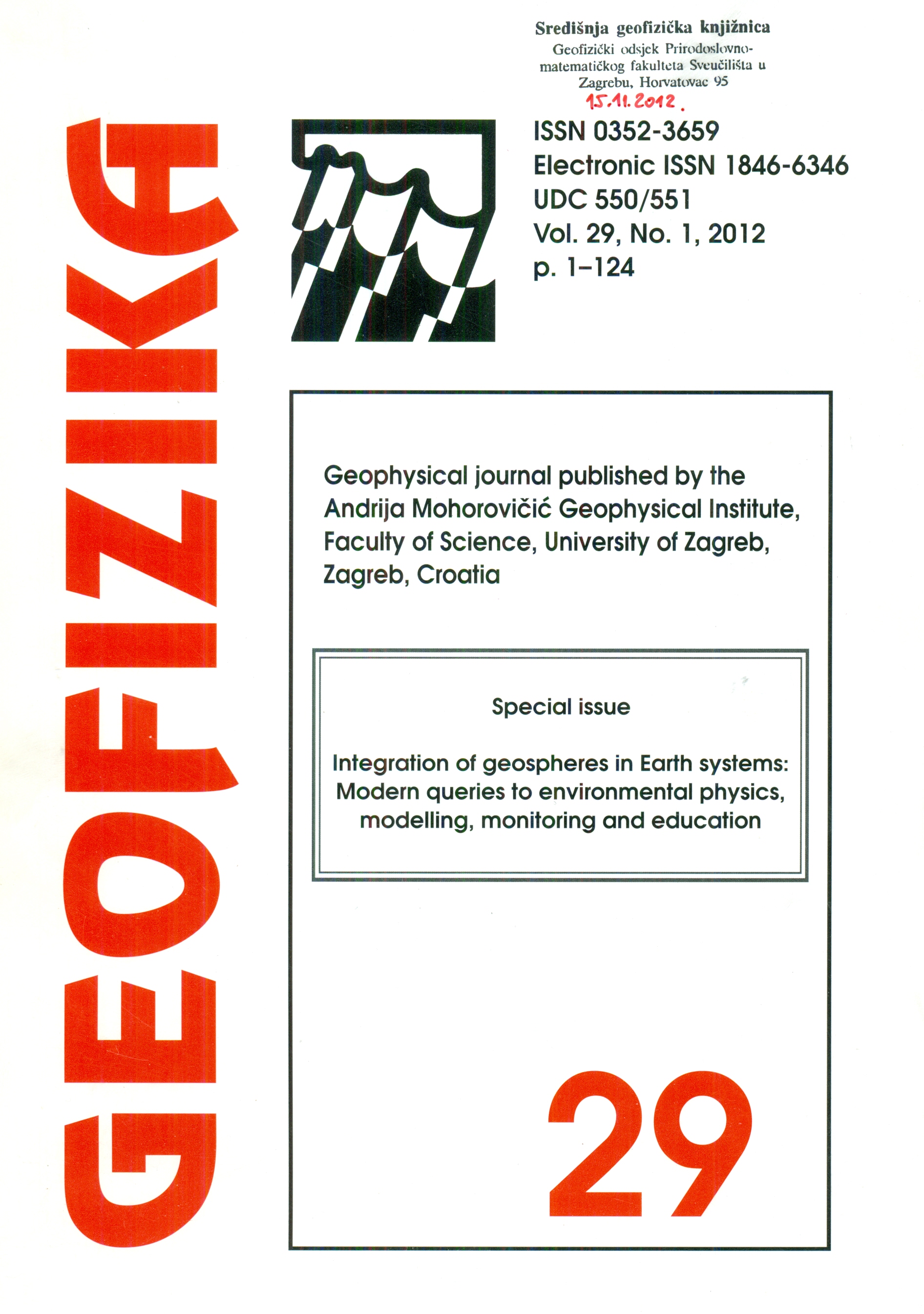Determining a turbulence averaging time scale by Fourier analysis for the nocturnal boundary layer
Keywords:
stable boundary layer, integral time scale, spectral gap, ogive functionAbstract
Atmospheric boundary layer motions are statistically non-stationary, and therefore, it is necessary to transform them into statistically stationary (statistical properties do not change in time) time series. This transformation is performed by the mean removal process, which defines an integral time scale for turbulent fluctuations. The present study compares two methods for estimating physically relevant time scale in a stable, wintertime nocturnal boundary layer. This time scale is used to remove the unsteady mean component of the instantaneous time signal for any meteorological variable. In this way, turbulent fluxes that appear statistically stationary can be yield. The first method employs the Fourier analysis in order to remove the contamination by mesoscale motions in calculation of eddy correlation flux. The second method used for determining a relevant turbulence avenging time scale represents a cumulative integral of the kinematic heat flux or momentum flux cospectrum: the ogive method. The time scale is evaluated using three-dimensional sonic anemometry data acquired at five levels of a meteorological mast (20, 32, 40, 55 and 62 m a.g.l.) located in the industrial part of Kutina, a town in Croatia. The results indicate the existence of the spectral gap scale in the spectrum of streamwise velocity component at all levels except at 32 m. This gap scale can be found for periods between 30 and 7 min for 20 m level and between 22 and 7 min at other levels. The time scale estimated by the second method is based on the location of the local maximum value of the ogive function of the kinematic heat flux and momentum flux cospectra. The ogive method gives time scales that define the high-frequency end of the spectral gap.
Downloads
Published
Issue
Section
License
Copyright (c) 2021 Geofizika journal

This work is licensed under a Creative Commons Attribution-NonCommercial 4.0 International License.

